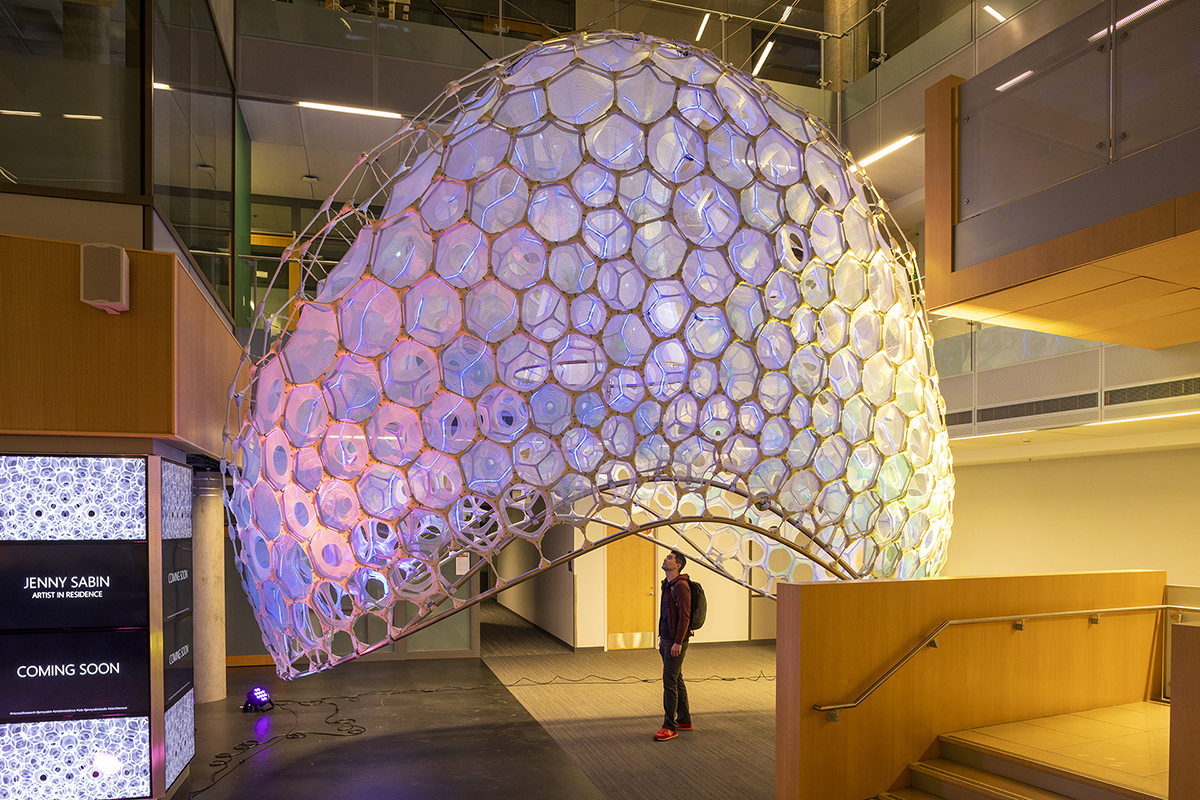At Microsoft’s Redmond, Washington, campus, architect Jenny Sabin has helped realize a large-scale installation powered by artificial intelligence. Suspended from three points within an atrium, the two-story, 1,800-pound sculpture is a compressive mesh of 895 3D-printed nodes connected by fiberglass rods and arranged in hexagons along with fabric knit from photoluminescent yarn. Created as part of Microsoft’s artist-in-residence program, the project is named Ada, after Ada Lovelace, the English mathematician whose work on the analytical engine laid the groundwork for the invention of computer programming as we know it.
Anonymized information is collected from microphones and cameras throughout the building. An AI platform designed by a team led by researcher Daniel McDuff processes this data to try to accurately sense people’s emotions based on visual and sonic cues, like facial movements and voice tone. This data is then synthesized and run through algorithms that create a shifting color gradient that Ada produces from an array of LEDs, fiber optics, and par (can) lights.

“To my knowledge, this installation is the first architectural structure to be driven by artificial intelligence in real-time,” Sabin, Microsoft’s current artist in residence, told the company’s AI Blog. Microsoft touts Ada as an example of “embedded intelligence,” AI that’s built-in and responsive to our real-world environment. McDuff also hopes that his emotion tracking technology, as dystopian as it might sound, could have solutions in healthcare or other caregiving situations. (Microsoft employees are able to opt-out of individuated tracking and they assure that all identifying info is removed from the media collected).
Ada is part of a broader push to embed sensing and artificial intelligence into the built environment by Microsoft and many other companies, as well as artistic pavilions that grapple with the future of AI in our built world, like Refik Anadol’s recent project at New York’s ARTECHOUSE.
